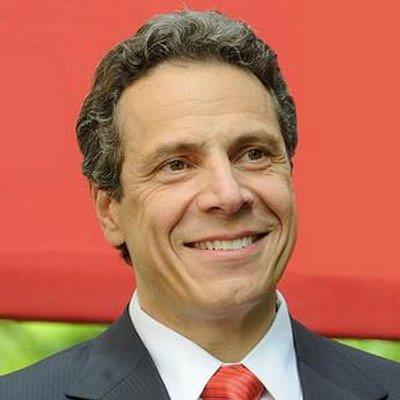
Governor Cuomo Calls on International Joint Commission to Maintain or Increase Lake Ontario Outflows
Multi-Agency Flood Preparation Actions Will Assist Homeowners, Small Businesses and Municipalities Along Lake Ontario and St. Lawrence River
More than $19 Million Provided to Lake Ontario Residents, Businesses, and Local Governments through State Recovery Programs
Governor Andrew M. Cuomo issued a letter to the U.S. Chair of the International Joint Commission requesting that the entity maximize outflows from the Lake Ontario system to reduce the flooding risk for New Yorkers living and working along the shoreline. The letter was issued in advance of the Commission's scheduled decrease in outflows on March 29, ahead of the shipping and navigation season. In addition to the letter, Governor Cuomo has directed a number of state agencies to begin implementing proactive measures to assist residents, business owners, and local governments in the event of flooding this year on Lake Ontario and the St. Lawrence River.
"After the disastrous flooding situations on Lake Ontario and the St. Lawrence River last year, it is critical that we remain vigilant and take whatever measures are necessary for ensuring that history does not repeat itself," Governor Cuomo said. "While New York has undertaken a wide range to preventative measures to protect against flooding, it would all be negated if the IJC mistakenly reduces outflows. With dozens of communities still recovering, the Commission must make the right decision and continue to maximize river and lake outflows."
In the letter, the Governor urged the IJC to sustain or increase the outflow levels in order to decrease the chances of potential flooding. While current Lake Ontario outflows are significantly higher than this time in 2017, despite this increased outflow, the lake's water level remains high and is forecast to rise six inches by April 23. Given that a matter of inches of water determines whether a house is habitable or a road is passable, the Governor is requesting that outflow decisions be made in accordance with the 1909 Boundary Waters Treaty which calls for the equitable sharing of this burden. New York is in no way seeking to cause flooding in the Montreal region, but is simply looking for the IJC to take all reasonable actions to limit flood risks along Lake Ontario.
Prior to the Governor's letter, multiple state agencies began initiating a number of measures to mitigate flooding that may occur in 2018. At the Governor's direction, state agencies stand ready to deploy the multi-agency Lake Ontario Rapid Response Team, which includes experts from the Division of Homeland Security and Emergency Services, Department of Environmental Conservation, New York State Police, Department of Financial Services, and the Office of General Services, along with county and municipal agencies.
The Division of Homeland Security and Emergency Services has already begun to deploy nearly 250,000 sandbags, sandbagging equipment, Aqua Dams, and other response assets to ensure that the counties and towns can take appropriate action now before the water levels rise to the point of flooding. Additionally, the Department of Environmental Conservation has continued its emergency permitting process which allows property owners to bolster break-walls and other protective structures.
Department of Environmental Conservation Commissioner Basil Seggos said, "DEC remains committed to providing direct assistance to homeowners and local governments throughout the region to address impacts to infrastructure from potential flooding. Through the Governor's ongoing leadership, DEC stands ready to help communities when and if the waters rise and will do our utmost to strengthen the resiliency of properties along the shores of Lake Ontario and the St. Lawrence River."
Division of Homeland Security and Emergency Services Commissioner Roger Parrino said, "Under the Governor's leadership, our Division has already started to deploy the first of a series of assets such as sandbags and Aqua Dams along portions of Lake Ontario in anticipation of flooding this spring. We remain actively engaged with our county partners located along Lake Ontario, as well as with our state partners, to ensure a rapid and coordinated response to any flooding issues."
NYS Homes and Community Commissioner RuthAnne Visnauskas said, "NYS Homes and Community Renewal is proud to be providing the resources homeowners and municipalities need to recover from last year's flooding. Under Governor Cuomo's leadership we are all working together to ensure that as we build back, we are being smart and creating strong infrastructure that will enhance the region's resiliency."
New York remains ready to take any and all actions necessary to reduce the potential for flooding on the Lake Ontario and St. Lawrence River shorelines. In another letter sent to the IJC this year, the State advocated for the IJC to maintain the highest level of outflows possible through the Moses-Saunders Dam. Another letter sent by Governor Cuomo to the Buffalo District Commander of the United States Army Corps of Engineers Buffalo District earlier this year requested advanced measures assistance to ensure the protection of flood-prone communities along the Lake Ontario shoreline.
To date, the State has distributed $19,655,848 in total recovery funds for Lake Ontario residents, businesses, and local governments. New York Homes and Community Renewal administers funding to shoreline residents and municipalities impacted by the 2017 Lake Ontario flooding through the Lake Ontario-St. Lawrence Seaway Flood Relief and Recovery Grant Program and Lake Ontario Infrastructure Recovery Program. HCR has distributed $18,675,000 through the Relief and Recovery Program to assist homeowners with flood recovery and awarded $9,034,970 through the LOIP to enable municipalities to enhance their resiliency to inclement weather. Moreover, Empire State Development administers the Lake Ontario Small Business Recovery Fund to assist small businesses with their recovery from the 2017 Lake Ontario flooding. ESD has distributed nearly $1 million to small businesses in the Lake Ontario region through this fund.
